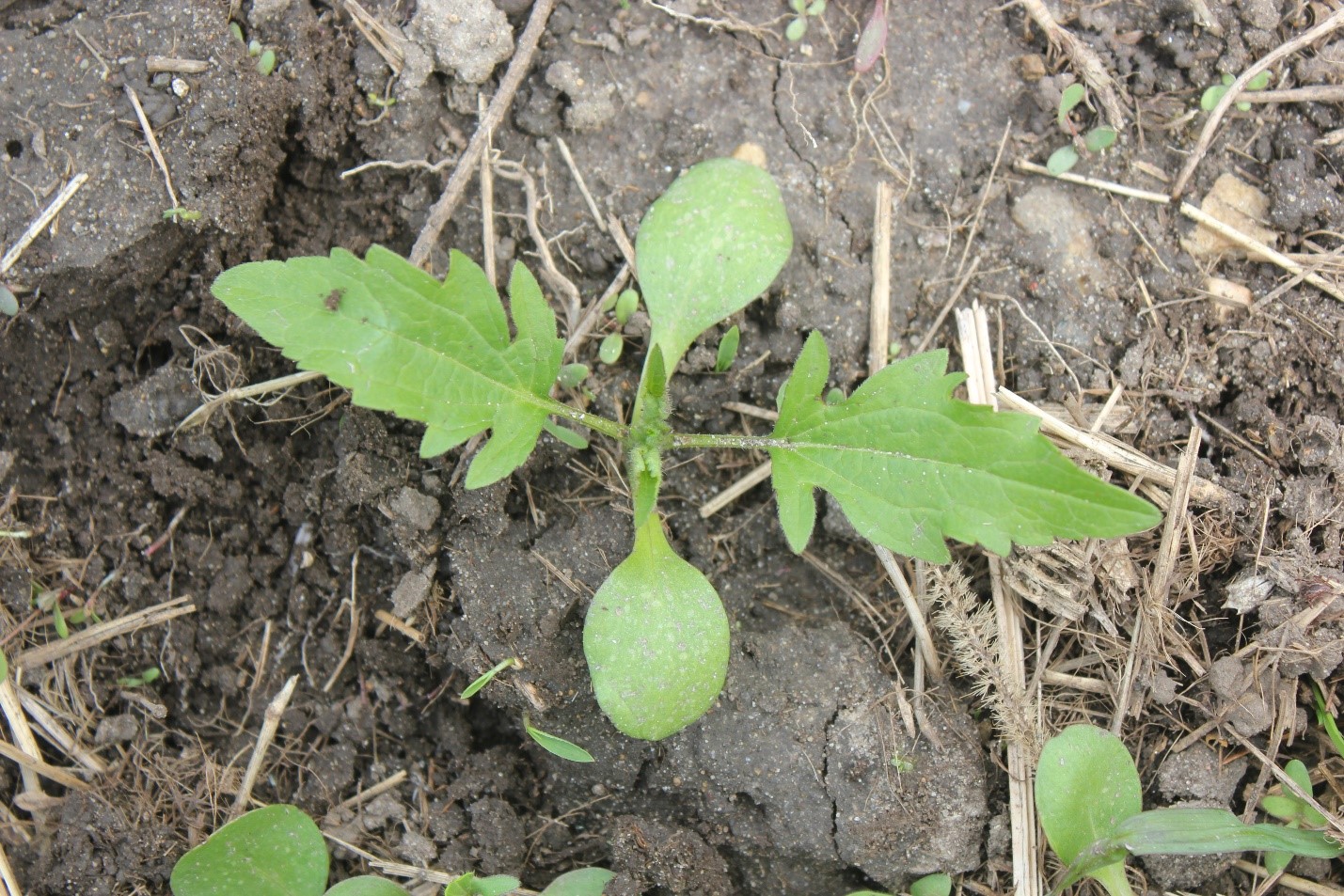Southwest Michigan field crop update – April 25, 2019
Field crop operations in southwest Michigan are intensifying as soil temperatures have warmed recently, and early-season crop pests are beginning to make an appearance.

Weather
Light rainfall totals have allowed producers to begin field work in earnest in lighter soils, while heavy ground remains mainly too wet to work. Rainfall in the region ranged from 1.5–3 inches over the past two weeks—see the figure from the National Weather Service. Planters began to roll with the moderation in temperatures over the last couple of days, but again, this has been mostly limited to very light soils. With colder and wetter conditions in the forecast for the weekend, including a return to snow for areas near Grand Rapids and northward, we expect most fieldwork to remain in the form of field prep for planting instead of putting seed in the ground.
Weed control
Burndown applications of herbicide have been made over the last week on no-till soybean ground with the round of warmer temperatures. Keep the temperatures in mind, as any program that uses glyphosate needs some warmer temperature for a couple of days to be the most effective. Be sure to use ammonium sulfate for best results. If you use 2,4-D, don’t forget the planting restrictions for soybeans, which is based on application rate. Treatments containing 1 pint per acre of 2,4-D ester need to be applied a minimum of seven days before soybean planting. Check the label for complete details. Remember the 2,4-D ester exclusion zones in Van Buren, Cass, Kalamazoo and Berrien counties (grape country). Tree fruit is also very vulnerable.
For those using approved dicamba products (XtendiMax, FeXapan, Engenia) in Roundup Ready 2 Xtend soybean, remember that any applications of these products, regardless of timing, must adhere to the restrictions listed on the label. Check the current label as changes were made by EPA in October 2018.

Giant ragweed
There seems to be a lot of early germination of spring annual weeds this season, given the temperatures we have seen so far during 2019. Giant ragweed is beyond the cotyledon stage in many fields (see picture), along with some advanced pigweed development. Given the giant ragweed problems we saw in a few fields last season, be prepared to quickly apply control measures if glyphosate does not provide control in no-till soybeans. Weeds that emerge with the crop that are not controlled are the most competitive, and giant ragweed grows very rapidly with warmer temperatures.
If you are using tillage, make sure it is aggressive enough to take out the plants—vertical tillage, although useful for fitting fields, will not likely provide adequate disruption of weed roots.
Early season insects
We saw a rapid increase in winter annual growth this last week. Warm, southerly winds also brought a return to insect activity in our area over last weekend with a few moths flying for the first time early in the week. Purdue University Extension’s moth trapping network across Indiana has been busy logging insect catches for black cutworm and armyworm. How much of a threat this is to your field has more to do with the amount of green cover that provides a place to lay eggs. Bare soil is not generally attractive to moths.
With a push of warm air expected next week, begin to keep track of where fields may be attractive. Armyworm females prefer grasses, cereal cover crops, etc. to lay eggs while black cutworms prefer mats of winter annuals. We will be placing moth traps for both species this week and will report peak flight timing as the season progresses.
Asiatic garden beetle white grubs
A fair number of questions have come in about what to look for in the southwest with Asiatic garden beetle grubs. Several folks expressed hope that drowning was an effective control given last year’s extremely wet conditions. Soils have been cold and Michigan State University Extension field crops entomologist Christina DiFonzo did not find many grubs yet in her trips across the southern tier in Michigan earlier this week. She did find a couple, so they probably are on their way up towards the soil surface.
Watch for white grubs being turned up by tillage operations, especially in areas that had marestail. You have to get out and check to see for sure. Focus on looking on the sandier hillsides first. Stay tuned….
Alfalfa
Alfalfa is coming out of winter stasis quite nicely in most places with good early growth on sandy fields. No alfalfa weevil tip feeding has been observed. Look for any updates on this pest in these regional reports as the season progresses.



 Print
Print Email
Email